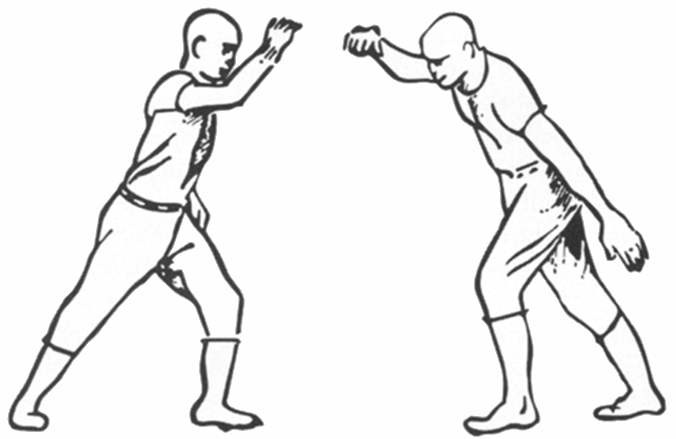
https://www.youtube.com/watch?v=Y1C17Dkqcls
This is the old Bahian ginga - and as far as I am concerned, the only REAL capoeira ginga. It uses Monkey+Seduction1 mechanics.
The other types of ginga, so beloved today (Tiger mechanics usually; but also Crane mechanics or Leopard mechanics), are disasters; degeneration of the original concept that do not allow you to do real capoeira (for example to use LightLegs kicks; see my article on LightLegs kicks for details).
If you want to get to the core of real capoeiragem, this is how you should ginga!
The key points (watch Zbynek on the left, because he used to do a lot of Bahian capoeira with me; David on the right is a Carioca guy who is used to Peneiracao and is there more for show):
-observe the general looseness, made possible by the Seduction1 modificator
-observe the short step
-observe the loose hands (compare it with modern ginga)
-observe how the hands bend at the wrist when they get to the front
-observe the position of the hands (guarda media)
-observe the 'empty step' with the front foot when in the back position. This is important for hiding your LightLegs Armadas.
In Mestre Decanio's writings on old Regional capoeira, you can find that he distinguishes three types of (the original Bahian) ginga: guarda alta, guarda media and guarda baixa - high, middle and low guard.
What is this about?
The guard refer to the position of the hands in the front of the ginga (it does have nothing to do with the height of the step).
https://www.youtube.com/watch?v=Vb0tRzJDb40
Guarda alta has the hands above the temple level; which is what Bimba shows on this picture(on the right; from Curso de Capoeira Regional)

Guarda media has the hands on the level of the jaw, bent at the wrists; which is what you can see in our initial video.
Guarda baixa has the open hands in front of the stomach; here, the hands are turned thumb down.
(The form of the guards is given by the mechanic archetype of the ginga; so they are fixed for anybody who does the correct ginga).
-
Now what is the purpose of those guards?
If it was just a passive defence against opponent's strikes - which people usually imagine them to be - you would be much better off just curling the body and hiding behind your forearms, similar to what boxers do! Why bother with these 'guardas' when boxers already have a much better guard, that works good in real situation (being punched at)? Were the old capoeiras so inept they could not come up with that?
For this, you will have to wait for another article! But just by knowing they exist you are ahead of 90% percent of contemporary capoeira players.
(Note that these guards only work with the proper Monkey+Seduction1 ginga).
Bonus:
This is a very nice video; the men in it play Regional in the old style. But most importantly, they (especially the yellow one) use the proper ginga (Monkey+Seduction1); with guarda alta!
https://www.youtube.com/watch?v=xLXQziqXvO4
This Web Page was Built with PageBreeze Free HTML Editor